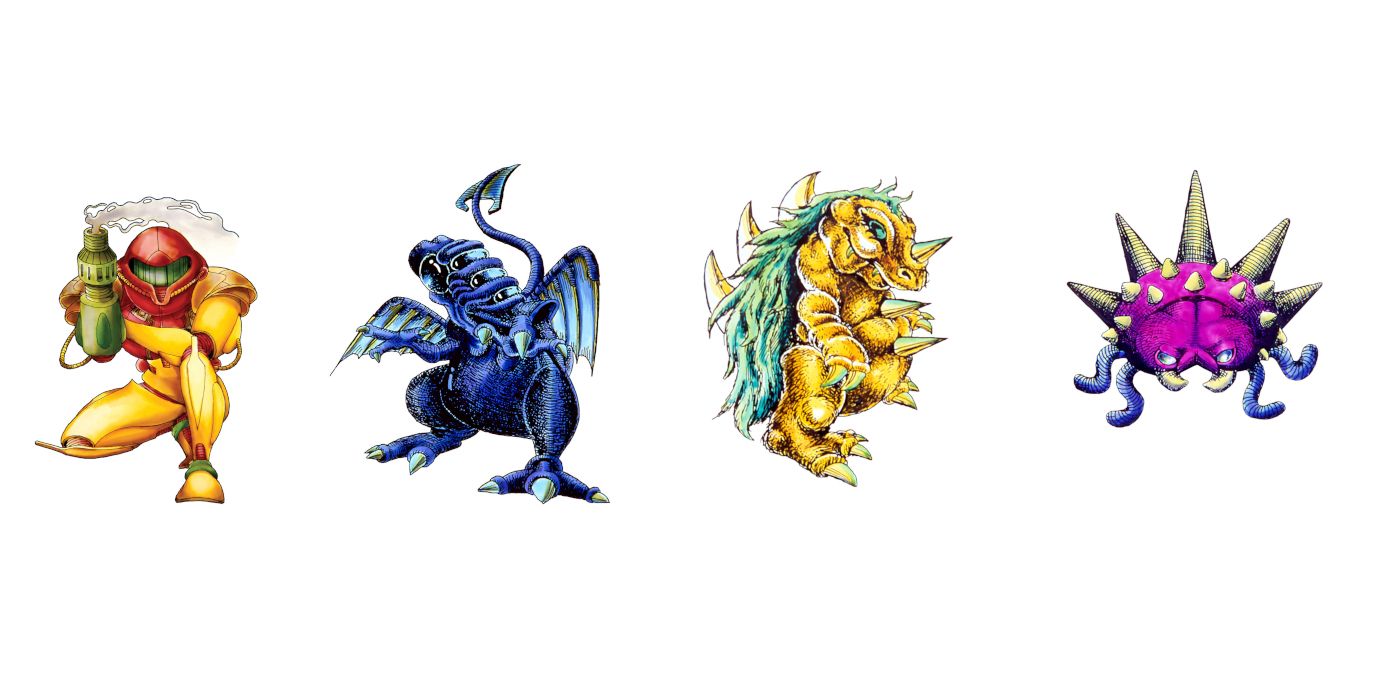To celebrate the 35th anniversary of Metroid's initial release, Nintendo has posted some of the original character artwork from the inaugural entry in the series. Metroid is among Nintendo's primary franchises released in the '80s, and the company's art direction around that time was very different from what fans know today. It may come as a surprise just how starkly unrecognizable heroine Samus and her adversaries are from their present-day incarnations.
Metroid hit shelves in Japan on August 6, 1986, and arrived in the United States the following year. The side-scrolling sci-fi adventure was considered a huge success by critics. Though there were many spacey games full of laser beams like it, Metroid drew attention on several points: it had unique, exploratory gameplay, sound design that made the game feel alive, a creative story behind the action that was included in its manual, and Samus herself was heralded as one of the first iconic woman protagonists in gaming history. Metroid would go on to become a long-lived franchise after this, spawning many sequels.
The art, posted on Nintendo of America's Twitter, has Samus, Ridley, Kraid, and the iconic Zoomer as they first appeared in Metroid's concepts. Samus is the most recognizable, but her suit design is still a departure from the sleek metal she sports in the more current Super Smash Bros. Ultimate. Its broad shoulder pads are similar to her official Chozo Suit, but the wires hanging off her armor and her comical single-piece shoes have been back to the drawing board multiple times since 1986. While Space Pirate general Kraid isn't too far off from how fans may remember him, Ridley looks like a different dragon entirely from the one seen in the game's remake, Metroid: Zero Mission. His original design was partially inspired by the Xenomorph of Alien fame, and more recent versions of the "Cunning God of Death" keep barely any semblances of that look beside his elongated head. The Zoomer is the final character depicted, the very first enemies players would encounter when they booted up Metroid on the NES. Their top half has been mostly retained in recent games, though their bottom tentacles have been replaced by insectile legs.
Many of these designs were able to change because of developing technology between Metroid's releases. In the first game, most enemies—and even bosses—could only have so many frames of animation, and could only take up a small portion of the game screen. Their appearances in the games were even different from their concept art due to limited color palates and other resources. Official design documents from Nintendo weren't as widespread in the '80s, so officially licensed publications that referenced the games sometimes reinterpreted the NES game art in ways that barely matched the developer's intentions.
It wouldn't be until Zero Mission in 2004 that these looks would get a much-needed fresh coat of paint and official finalization. Even though that game launched more than 15 years ago, it still came out after the last original side-scroller in the series. That will finally change on October 8th of this year, once the fifth Metroid game, Metroid Dread, launches on Nintendo Switch.
Source: Nintendo of America/Twitter

